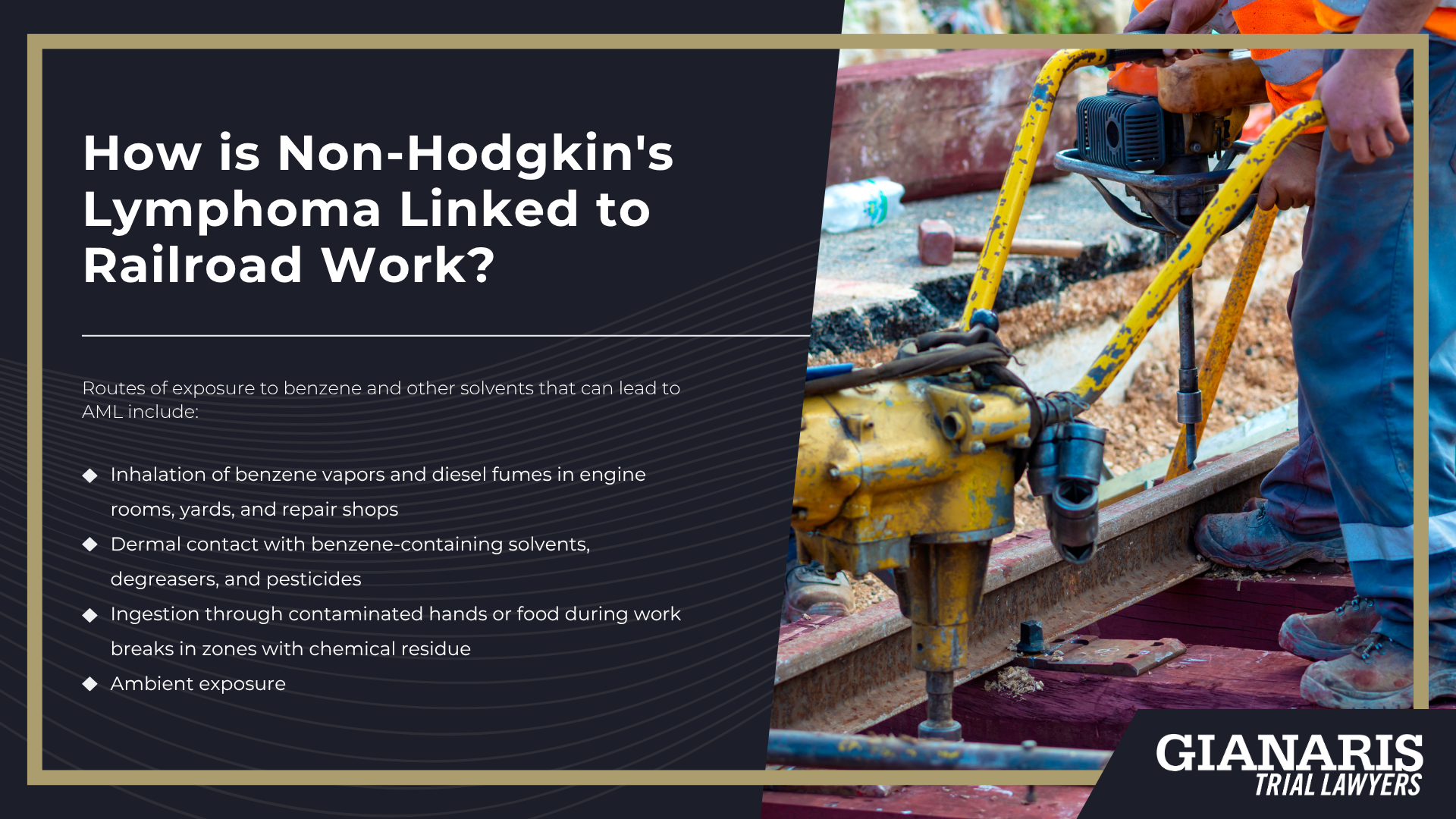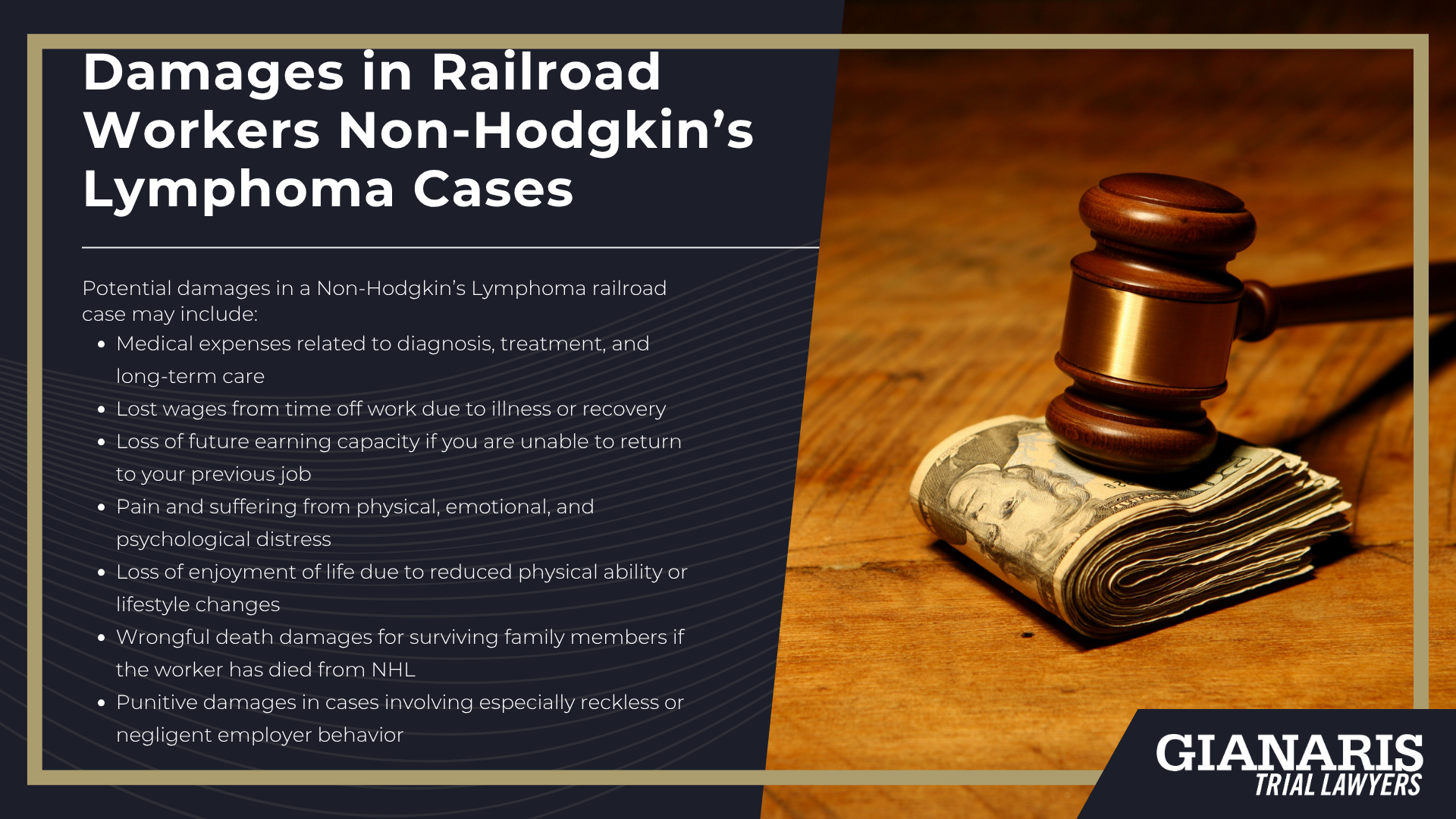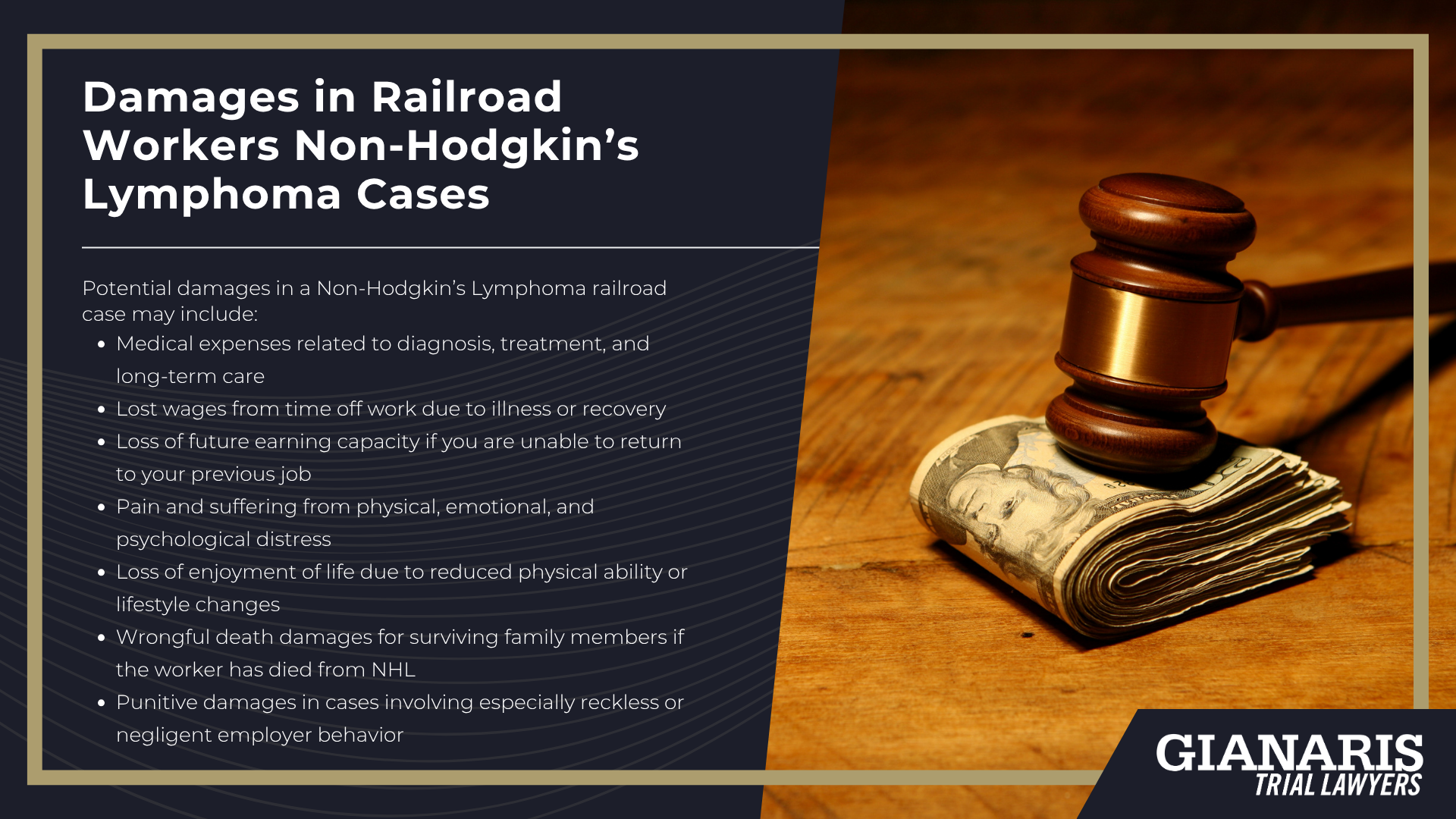Non‑Hodgkin’s Lymphoma (NHL) is a type of blood cancer that originates in the lymphatic and immune systems.
In the railroad industry, workers may face occupational exposure to carcinogenic agents like benzene, pesticides, and diesel exhaust; substances scientifically linked to an increased risk of NHL.
Meta‑analyses show that occupational benzene exposure is associated with approximately a 27% higher risk of developing NHL, especially in industrial occupations over long durations.
While diesel exhaust exposure has not consistently demonstrated elevated NHL risk in epidemiological studies, prolonged contact with diesel fumes remains a concern due to known immunotoxic and carcinogenic components in the exhaust mixture.
Benzene and pesticide exposure can lead to genetic damage, immune suppression, and chromosomal abnormalities that promote lymphoma formation.
Because railroad employees often work in enclosed yards and maintenance shops with limited ventilation, the risk of long‑term exposure increases significantly.
Even short‑term exposure to high concentrations (especially without respiratory protection) can accumulate over time and contribute to a cancer diagnosis of NHL.
Affected workers and their families may pursue a railroad workers cancer lawsuit when employer negligence allowed repeated exposure to dangerous substances such as solvents, fuel emissions, and herbicides used in track maintenance.

Routes of exposure that may lead to NHL include:
- Inhalation of benzene vapors and diesel fumes in engine rooms, yards, and repair shops
- Dermal contact with benzene-containing solvents, degreasers, and pesticides
- Ingestion through contaminated hands or food during work breaks in zones with chemical residue
- Ambient exposure in poorly ventilated workspaces where toxic chemicals linger over days or weeks
These exposure pathways underscore how sustained contact with toxic chemicals in railroad settings can elevate the risk of developing NHL.
Legal claims must link occupational exposure to a confirmed NHL diagnosis and demonstrate how the railroad company failed to implement essential protections for exposed workers.
Railroad Job Roles Linked to High Levels of Benzene Exposure & NHL Diagnoses
Many job roles in the railroad industry placed workers in direct contact with toxic substances, particularly benzene, a known carcinogen linked to Non-Hodgkin’s Lymphoma (NHL).
Railroad workers involved in fueling operations, equipment maintenance, and track treatment were frequently exposed to benzene-containing products or diesel exhaust.
Jobs that involved cleaning solvents, degreasers, and herbicides often led to long-term exposure, even in cases where workers weren’t aware of the dangers.
Without proper respiratory protection or hazard warnings, the risk of developing serious illnesses like NHL increased significantly.

Railroad job roles commonly linked to high levels of benzene exposure and NHL diagnoses include:
- Locomotive mechanics – worked with solvents, degreasers, and engine fluids during repair and inspection
- Fueling station workers – handled diesel fuel and were regularly exposed to vapors and spills
- Carmen (railcar inspectors) – performed inspections and maintenance using benzene-containing cleaning products
- Track maintenance workers – applied herbicides and pesticides to control vegetation along tracks
- Engineers and conductors – operated in enclosed cabs where prolonged diesel fume exposure was common
- Roundhouse workers – serviced engines in poorly ventilated areas with heavy chemical use
- Boilermakers and machinists – worked with industrial lubricants, degreasers, and adhesives
- Cleaning crews – used industrial cleaning agents with benzene as a primary solvent
- Signal maintainers – sometimes handled oil-based or solvent-treated components
- Electricians and welders – worked in proximity to fumes and heat-activated chemicals
Each of these positions could result in sustained benzene exposure, creating serious long-term health consequences for affected workers.
Understanding these roles is critical in evaluating the merit of a railroad workers cancer lawsuit and proving employer negligence in toxic exposure cases.













